provided by John E. Phillips
There have been many innovations in green field plantings. Let’s take a look at a few being introduced by Mossy Oak BioLogic. One innovation you may want to consider is using an electric fence to protect your green field plantings in areas with heavy deer populations. I contacted an expert in the field, Mac Thatcher, the sales manager with BioLogic about the best way to grow a green field for wildlife.
Know the Importance of Spring Protein Peas and Protecting That Crop
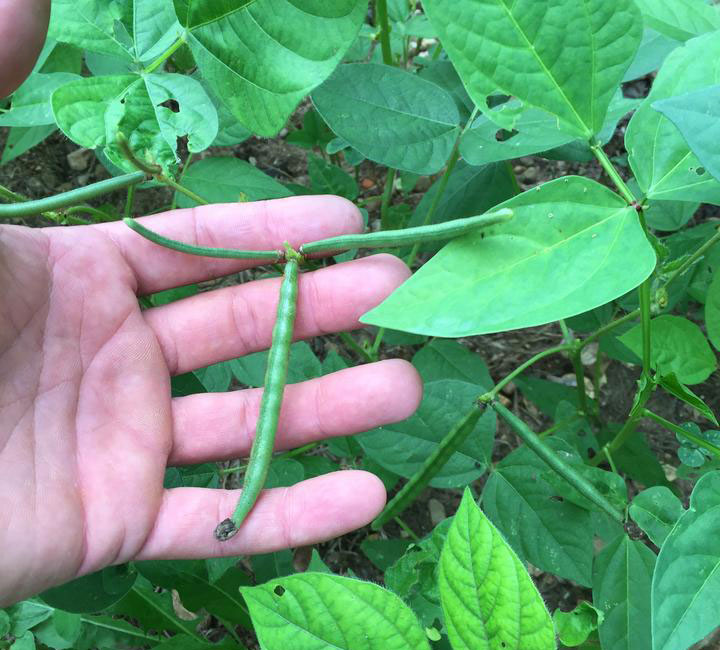
John E. Phillips: Why do landowners and hunters need to plant green fields for deer now?
Mac Thatcher: At this time of the year, growing antlers is what’s happening in the buck community. Also bucks are trying to put on weight. Summer green fields help to enhance and supplement native plants for bucks and also for does. At this time of the year, does are dropping their fawns and nursing them. So, the stronger and healthier does are, the healthier the fawns they produce will be. If the does are fed supplementally with green field crops designed to increase the richness of the doe’s milk, the vitamins and minerals in the doe’s milk means your land will have a stronger and healthier fawn crop. Spring and summer food plots give your deer herd that extra nutritional boost by supplementing what natural forage doesn’t provide.
Phillips: At this time of the year, what crop do you suggest that landowners and hunters plant in their green fields?
Thatcher: I recommend planting BioLogic’s new Spring Protein Peas, which will provide maximum nutrition for your deer herd during these months that bucks are growing antlers, the does are dropping fawns, and the fawns are nursing. BioLogic’s Spring Protein Peas have a mixture of two different types of iron and clay peas. This high-protein mixture, as soon as it germinates, starts to grow and is very nutritious. Spring Peas also has mung beans contained in the Spring Peas mix that flowers in the summer and is very palatable to the deer then. So, with this combination of peas that come up quickly after planting, and then late peas that come in later in the summer, you plant this annual planting only one time during the year. Now these peas won’t come back, like clover does, however, it will be available all year long. We refer to this planting as a high-powered annual that provides a nutritional boost to your deer herd and especially as the weather in the South becomes hotter.
If you’re not using an electric fence to keep the deer out of your food plot until the plants are well established, I suggest you plant about 5 acres of these peas - especially on properties with high deer densities.
Phillips: Why do we need to put up an electric fence? How high does that fence have to be to be effective?
Thatcher: Many parts of the South and the Midwest have high deer densities. As soon as you plant a crop that’s highly desirable, very palatable and nutritious, the deer will start feeding on that crop and may wipe it out quickly. Then that crop won’t produce the tonnage of deer food that it can provide, if you keep the deer from getting to it until it’s more mature. By putting up an electric fence, you let your crop get a good start on growing, and it’s further along toward its mature stage before the deer eat it all up.
Phillips: How high does the electric fence need to be to protect the small plants from deer eating them?
Thatcher: Usually a fence should be between knee to waist high on the hunter. You want that electric fence to be at about the height of a deer’s nose when its head is down or chest high when its head is up.
Phillips: How long do we need to leave this electric fence up?
Thatcher: The dates when you plant, the amount of rainfall the region receives and the type of soil are all factors that determine how long you should leave the fence up after planting. The general rule of thumb is that when you see substantial growth from your peas, then the time has come to take the electric fence down. Wait until you have well-established plants before you allow deer to start feeding on the peas. Realize that the size of the green field you’re planting dictates the size of the electric fence you need to use to deter the deer from getting there too early and eating all the peas before they’re mature.
Phillips: How much of the fence will you take down once you have an established crop, and how much of the fence do you leave up so that the deer in high-density areas don’t completely wipe that green field out?
Thatcher: You’ll have to give a little to get a little. By that, I mean start your fence a somewhat inside of the green field you’ve planted, so some peas are planted outside the fence that the deer can feed on as soon as those peas come out of the ground. But then shrink the size of your fence as the plants start maturing, and the deer begin grazing heavily on your green field. You want to maintain the protection for the majority of your green field until the peas mature. However, by moving the fence in a little bit at a time, the deer still can feed on that portion of the crop before the bigger part of the crop fully matures.
Southern Late Spring and Summer Requires Game Changer Forage Soybeans
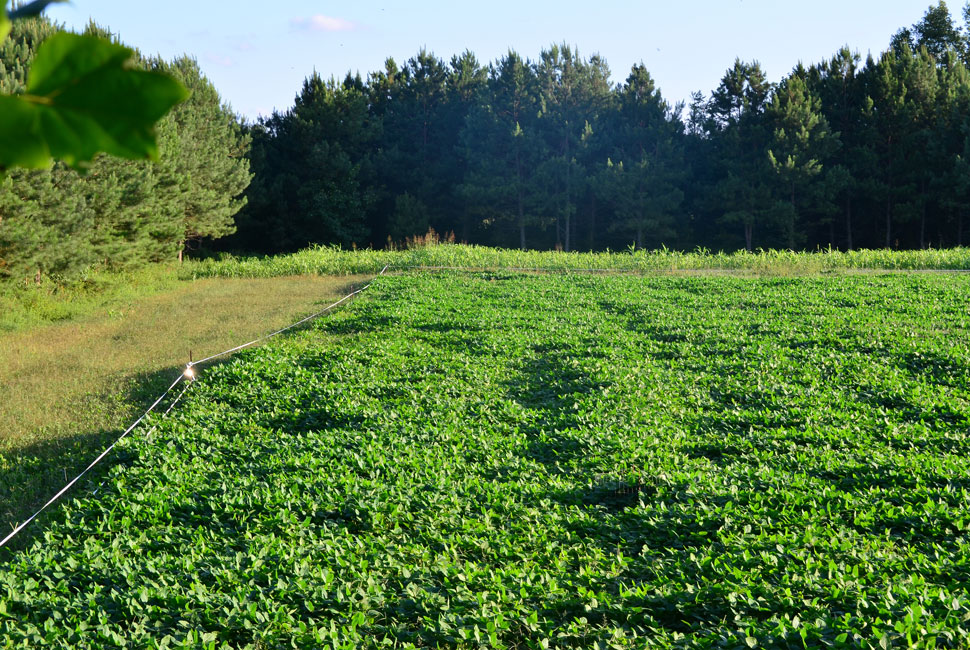
Phillips: What other crops should we consider for some of our late spring and summer green field plantings?
Thatcher: I like our Glyphosate-ready Game Changer Forage Soybeans. Northern hunters can go ahead and start planting Mossy Oak BioLogic Clover. The southern hunter should wait until fall to plant clover, because the summers in the South aren’t conducive to having a good clover stand when the temperatures are over 80 degrees and probably around 100 degrees.
Game Changer Forage Soybeans is a relatively new green field planting and is the second year that hunters and landowners have been able to purchase this brand of soybeans. The advantage with these soybeans is you not only can spray Glyphosate (Roundup) over your plot to kill the weeds before the crops are planted, you also can spray Roundup over the beans to kill the weeds without killing the soybeans. The Game Changer Forage Soybeans are known as a Group Five soybean and are called an indeterminate soybean, which means the plants will keep growing after they flower, providing these soybeans with a long growing season. .
Phillips: Once again, one of the problems that soybean farmers in the South have is that many times in high deer concentration areas as soon as the soybeans come out of the ground, the deer mow it down and kill the plants. How do we solve this problem?
Thatcher: In areas with high deer density, growing spring and summer crops without them being destroyed is quite difficult. However, there are two solutions to this problem. Plant larger green fields, and use electronic fences around your green fields, as I’ve mentioned earlier. I believe that the electric fence enables the hunter/landowner to make sure that he has food on the table to feed the number of deer coming to the green field. A good rule of thumb to ensure that you get the maximum growth and the maximum tonnage out of your green field plantings is to surround those green field plots with an electronic fence until the plants are close to or at maturity. Although the electric fence isn’t mandatory, and some landowners and hunting clubs have had great success without using electronic fences, the size of the deer herd on the land you hunt will dictate whether or not a fence is necessary to keep the deer out of your food plots until the plants can reach maturity.
Plant Guides’ Choice for Waterfowl Forage for Wintertime
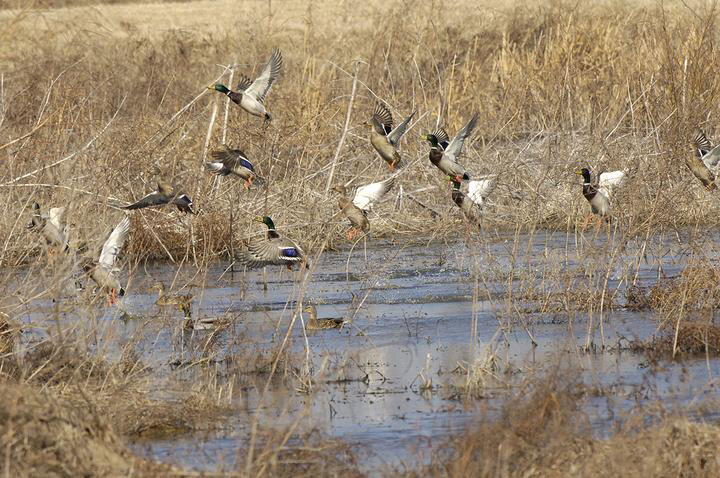
Phillips: Many deer leases and hunting clubs around much of the country home backwater sloughs and moist soil areas that can be planted to attract waterfowl. What do you recommend?
Thatcher: In Mississippi, Georgia, Alabama, Florida, Texas and South Carolina, you may consider starting to plant for waterfowl in July. Mossy Oak’s BioLogic waterfowl blend, Guides’ Choice Waterfowl Forage, allows hunters to plant a crop the ducks really love and will be attracted to in moist soil areas and in places that the landowner can flood and have water on to attract waterfowl. Seeds in this waterfowl blend, Guides’ Choice, are varieties of Japanese millet and sorghum. Another advantage to using this seed blend is you broadcast these seeds right on top of a mudflat or a backwater slough off a river system to germinate, grow and produce plenty of food for the ducks. Or, in a freshly drained region that still has plenty of moisture in its soil, you can broadcast this seed blend on that damp place. The planting rate suggested for this variety of waterfowl supplemental food is 20 pounds of seed per acre. All of the Mossy Oak people based in Mississippi hunt over this planting during waterfowl season. They’ve learned over the years that the ducks are very attracted to this mixture of seeds and love to feed on it.
Place BioRock Along Deer Trails
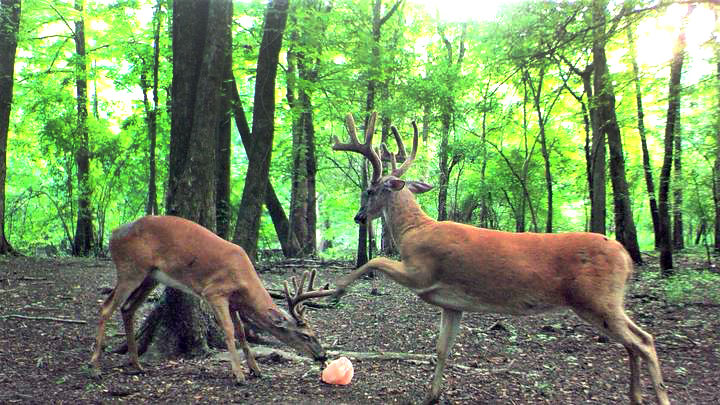
Phillips: Mossy Oak has several different types of minerals that BioLogic produces to use as deer attractants. Can you please explain what’s important about minerals to us?
Thatcher: BioRock is 100% natural solid mineral rock salt, not a compressed mineral lick. You can put out BioRocks on deer trails to attract deer during the spring, summer and early fall. When you put BioRock out on or near the deer trails and use trail cameras, you can census your deer herd to help determine how many bucks and does you have on your property. You can get pictures of the bucks as they grow their antlers. During early deer season in many states, deer will continue to come to this salt-and-mineral site. You can pattern your deer from the information you receive from trail cameras and mineral licks to know where and when the biggest bucks on the property are appearing. BioRock has over 84 trace minerals in it with calcium, potassium and sulfur the key ones and enables hunters to give their deer more trace minerals and salt their bodies need at that time of year.
Putting out BioRocks doesn’t require any equipment. You can put two or three of the rocks in a backpack and carry them to the sites where you want to put them. Or, use your four-wheeler, and take the BioRocks to high-traffic areas along trails the deer are using. Placing the BioRocks and using trail cameras are great activities at this time of the year to involve youngsters and/or novice hunters in deer hunting by showing them the trail-camera pictures of the deer on the property coming to the BioRocks during nighttime and daylight hours.
Another tactic to use with Bio Rock is to put the BioRock on a trail leading to a green field, to attract the deer. Then you’re habituating the deer on your property to come to that mineral rock and the green field and hopefully follow that same route during deer season. However, never put BioRock out in a green field. Rain will cause some of the salt and minerals from the BioRock to leach down into the field’s dirt, and that salt will kill the growth of any natural plant or agricultural plant you may want to put in that same spot, so there’s good news and bad news. The good news is the BioRock’s salt and minerals will go into the ground and be present there, even after the rock has disintegrated. The deer still will come to that location and actually paw-up a hole to get to the salt and minerals that have been deposited from the rain washing over the BioRock.
BioLogic’s Wildlife Sweet Corn Is Like Ice Cream to Deer
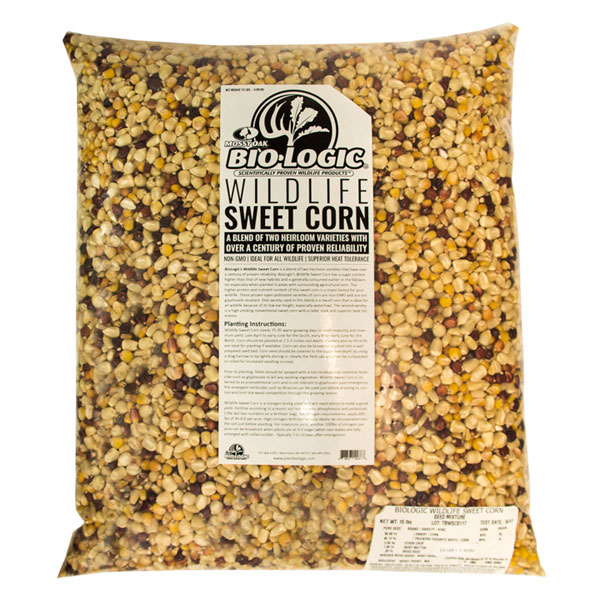
Phillips: What other wildlife plantings should landowners and hunters be considering at this time of year?
Thatcher: BioLogic’s Wildlife Sweet Corn has a high sugar content, and the deer usually will feed on it heavily in the early fall and winter. This variety of corn is a non-GMO corn and one of the varieties in this sweet corn mixture is a dwarf corn. The height of this dwarf corn is right at the height of a deer. In other words, it’s closer to the ground and easier for the deer to get to and eat than the larger varieties of corn that are taller. The deer may have to knock down the stalks to get to that corn. This dwarf corn takes about 75-95 days to reach maturity. So, depending on where you live, you’re probably getting close to planting time in the late spring and early summer to offer this deer ice cream from BioLogic. We recommend you plant this corn variety in late April to early June. In the more northern part of the country, you may want to plant it in May to early June.
Phillips: You’ve given us several examples of green field plantings that we can plant now and use to increase the nutritional level of our deer herds and to attract and hold deer on our properties. Should we plant all four of them and put out BioRocks now?
Thatcher: What we’ve found to be the most effective in spring and summer plantings is to plant several green fields of various foods. Then the deer have a wide variety of highly nutritious, very palatable foods that they can eat. Deer are browsers and feed on many different plants throughout the year. So, rather than just planting one of these seed blends in all of your green fields, I suggest you plant each one of these in different green fields on the property that you hunt to attract more deer and give them a really nice buffet of various crops they can feed on during the spring and summer.
For more information on these different BioLogic plantings and when to plant, call 662-495-9292 or go to https://www.plantbiologic.com/.































